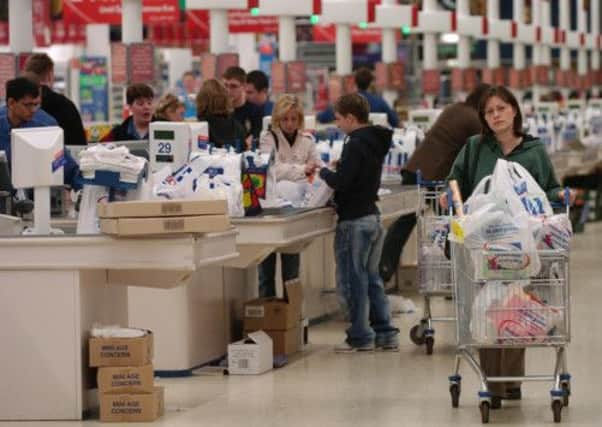Britain’s grocery market to grow to £206bn by 2018


Research from IGD, the consumer goods research group, predicts growth of 21 per cent to push the market to roughly £206bn in the next five years. UK food sales are currently worth almost £170bn, up 3.7 per cent on 2012.
Although superstores will still generate the largest proportion of sales, they are set to grow at a much slower rate than other formats such as online, discount and convenience shopping.
Advertisement
Hide AdAdvertisement
Hide AdJoanne Denney-Finch, chief executive of IGD, said these “hot three” would collectively account for more than £3 out of every £4 of growth anticipated in the coming five years. Based on interviews with more than 1,000 shoppers, online sales are expected to show the biggest percentage growth, jumping by 124 per cent to £14.6bn.
Convenience stores, which are also reaping the rewards of changing lifestyles, are forecast to clock up sales growth of nearly 30 per cent to £46.2bn. They will bring in the biggest cash growth of all the grocery formats.
“With more of us owning smartphones and tablets, online grocery shopping is becoming more popular,” Denney-Finch said. “Retailers are also introducing more convenient and flexible services, such as temperature controlled ‘click & collect’ lockers for shoppers to pick up their groceries at a time and place that suits them.
“Convenience stores are also benefiting from a cultural shift towards shopping ‘little and often’. They are increasingly providing products tailored to specific locations rather than a ‘one size fits all’ approach.”
Although big supermarket chains such as Asda have warned recently that consumers are still feeling the financial pinch, IGD’s forecast takes into account a gradually-improving economy in which shoppers will feel comfortable in “trading up” to more expensive brands, thus pushing up their overall spend.
However, discount chains such as Aldi and Lidl are still expected to thrive in this improving environment. IGD says many shoppers who have used these chains throughout the recession have grown to like them, and will see no reason to stop using them.
“They have improved shopper perceptions by effectively communicating the quality and value for money of their products, while also expanding the range of items they sell to help shoppers complete more of their weekly shop there,” Denney-Finch said.
Nearly a third of shoppers – 32 per cent – said they would use food discounters more in the year ahead, compared to just 24 per cent in September 2010.
Advertisement
Hide AdAdvertisement
Hide AdThe survey chimes with recent findings from other research groups such as Kantar Worldpanel and Nielsen, which similarly recorded strong growth among discounters.
Morrisons – the UK’s fourth-largest supermarket chain after Tesco, Asda and Sainsbury – is among the last of the major chains to embrace the internet and smaller store formats.
It is expected to post an 8 per cent fall in profits when it reports its half-year results today.